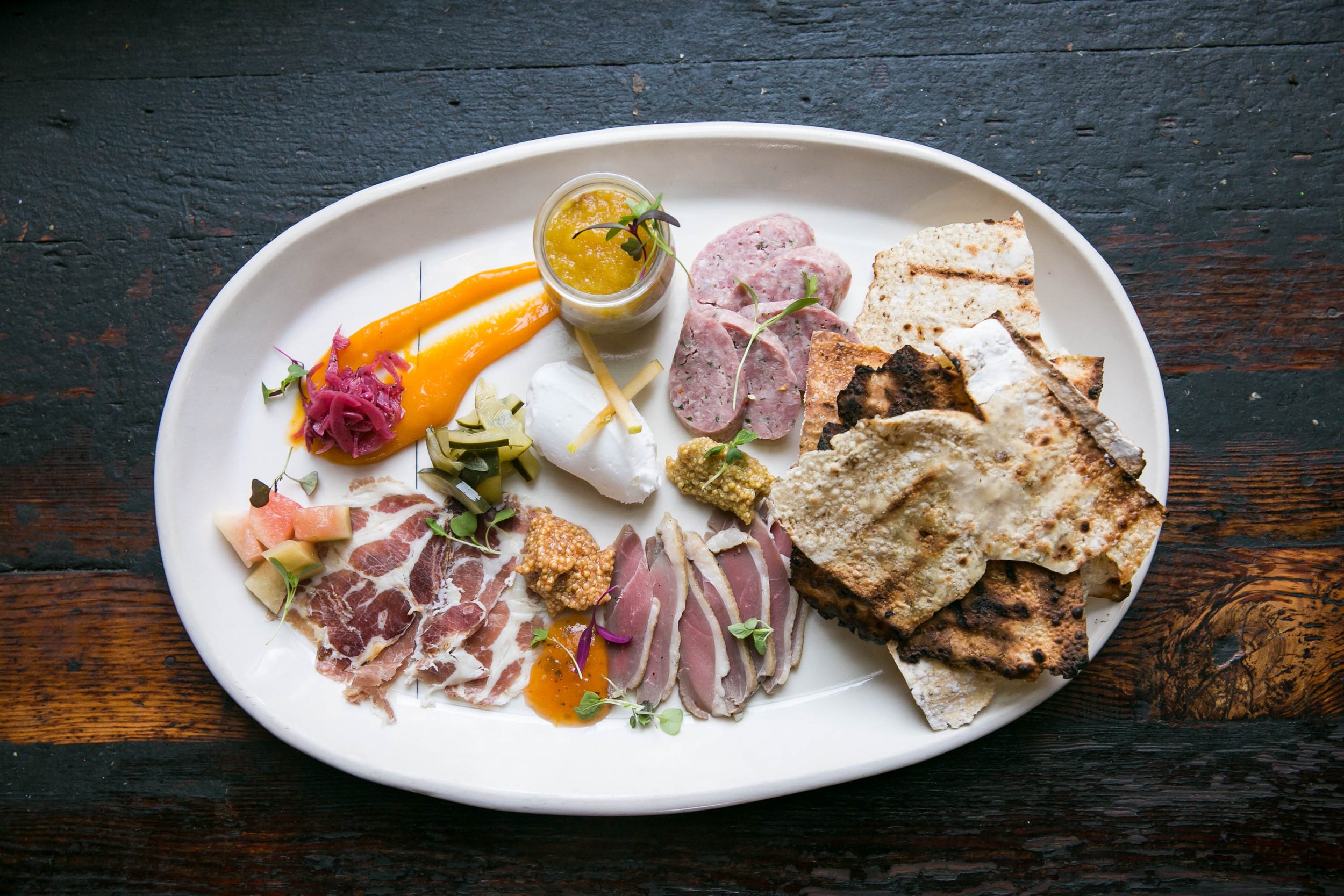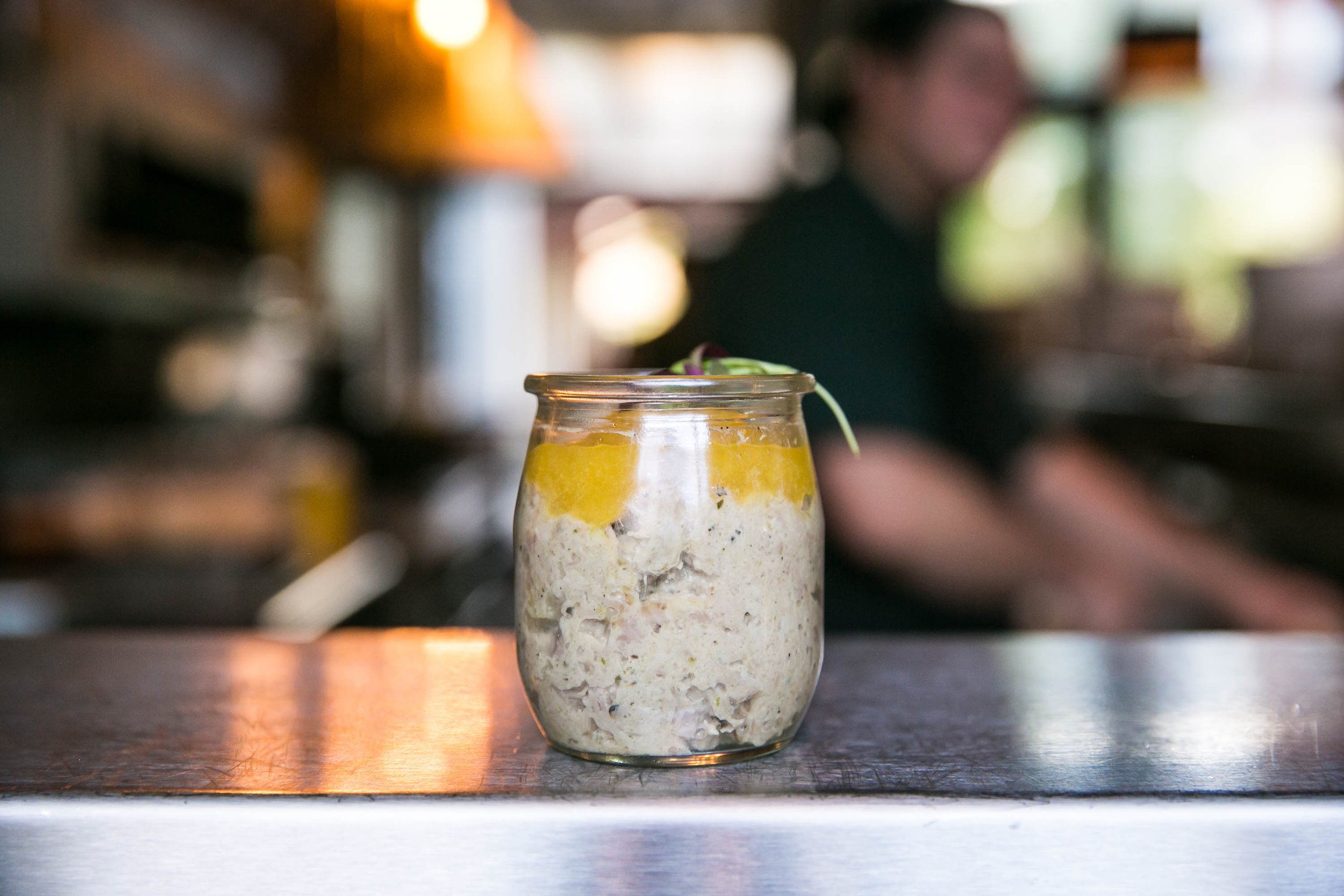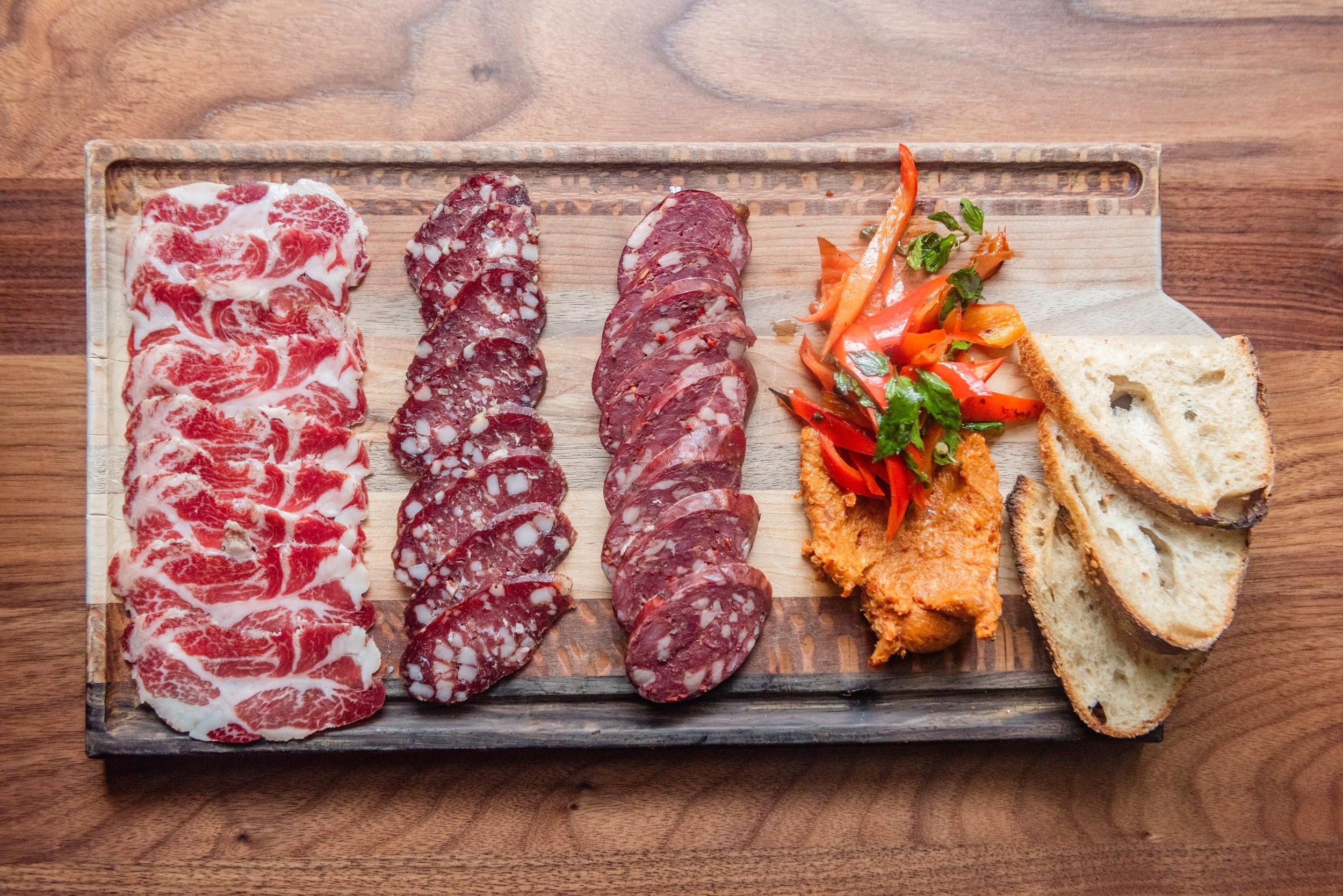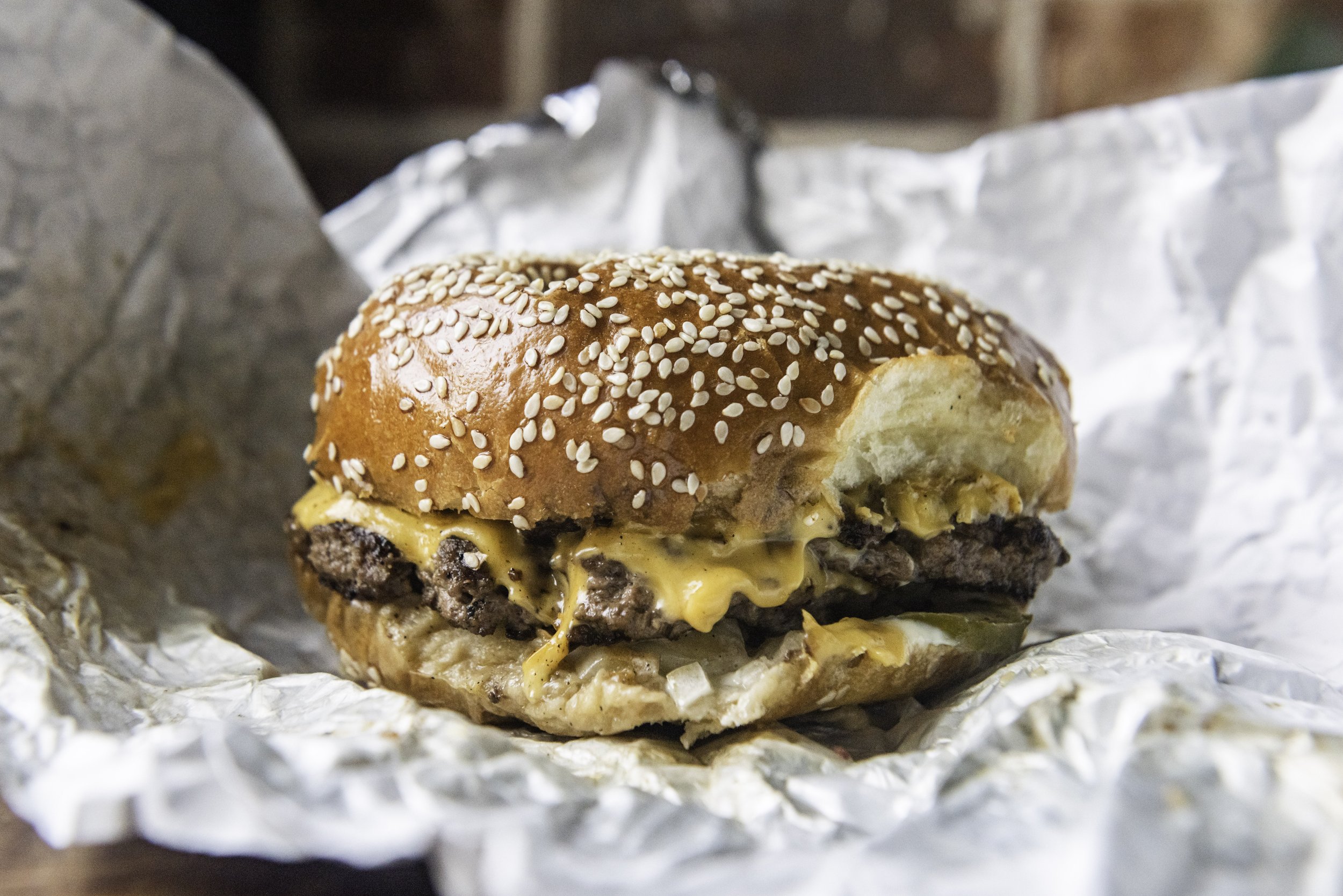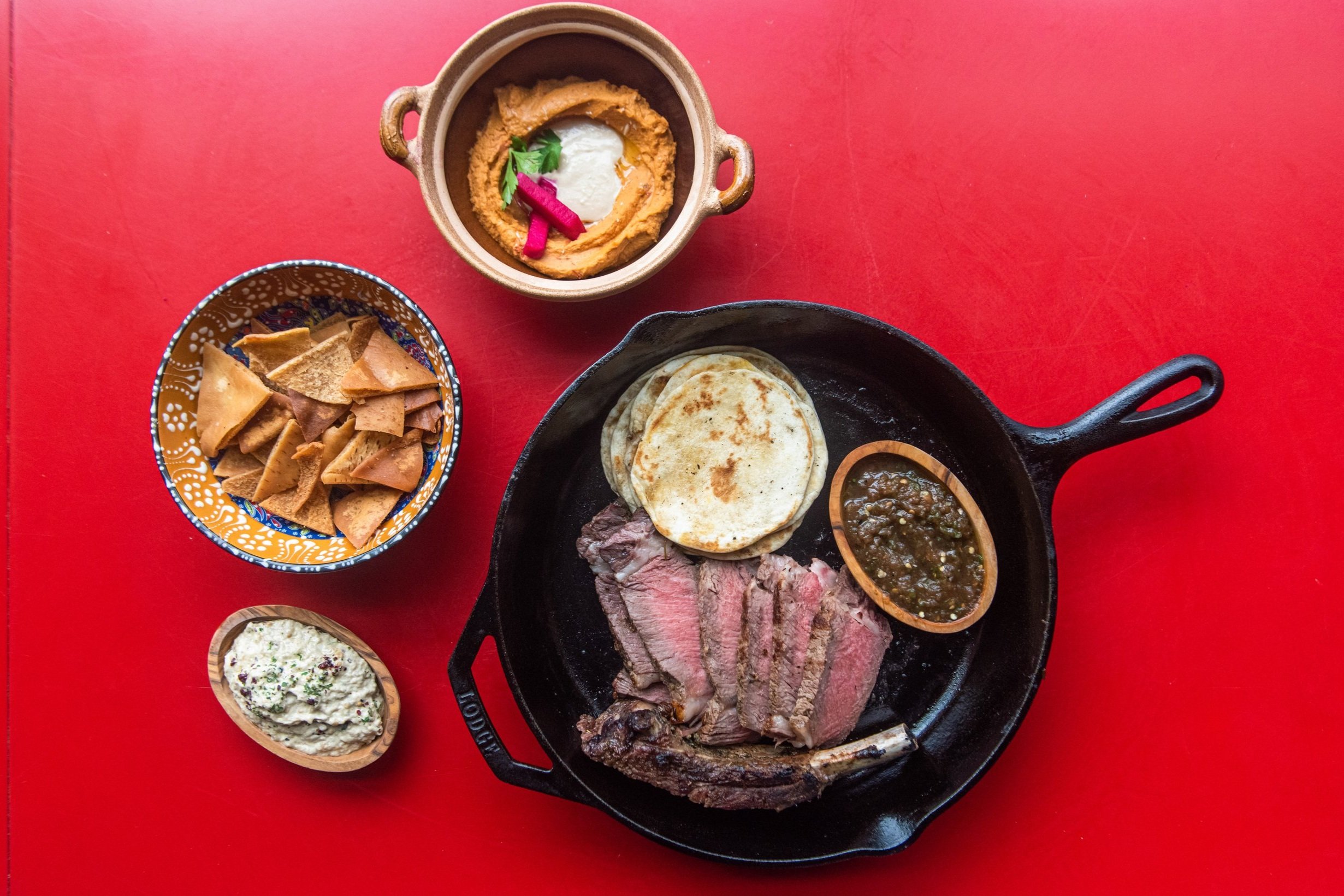Mayan-Inspired Meat Spread at Cured
It's all about the emulsification in Steve McHugh's pineapple-chile pork rillettes.
Chef Steve McHugh of Cured in San Antonio was inspired by a trip to the Yucatán before he ever stepped foot in Mexico. After receiving an invitation to join Chef Hugo Ortega to cook for the Lonestar Chef Series in the Riviera Maya, McHugh hit the books.
“I did a lot of studying because I didn’t want to just do food from Cured. I wanted to make it local,” he says. “I came across a recipe for chile-pineapple lechón and it stuck in my brain. I thought, ‘How can we play around with this process and ingredients and add Cured’s style?’” Answer: pineapple-chile pork rillettes.
Fire-up the grill. McHugh chars pineapple, habaneros, poblanos, and serranos. “Twice a week, there’s a farmers market right in front of Cured. We’re that restaurant that’ll take anything when farmers don’t sell it. We get a crazy abundance of chiles. [For this preparation], we use twice as many poblanos because they’re milder, and we want chile flavor. Sweetness comes from the habaneros. And the serranos grill well because their water content is low.”
Go for a joyride in a Vitamix. The charred chiles and fruit are puréed with agave syrup and banana vinegar sourced from Rancho Gordo. “The vinegar, ferment-y and sweet, adds this extra umami quality and roundness to the rillettes, but without actually adding something that’s fermented,” says McHugh.
Take a fat bath. The pork is confited in its own fat for about three hours at 300ºF. “Food cost on the rillettes is like nothing. We only process whole animals, so we collect trim from hams and scrape bones. But we love the beautiful shoulders for this. About 80 percent of the meat is pork butt. Watch the temperature and time because when pork starts to get crispy, crunchy or dark, it’s impossible to emulsify, and a good rillette is a good emulsification.”
Ya gotta keep 'em separated. Drain the pork confit, reserving meat and fat separately. “You’ve confited the pork right when, after the fat congeals, a layer of pork jus forms underneath.”
Make it smooth. Using a stand mixer, slowly combine one-third of the reserved fat/jus with 3 cups salsa and pork. “Make sure everything is room temperature or it will break. This emulsification uses meat as a binder for fat and jus. If you overcook the pork, it won’t bind and you have a mess, a broken emulsification. You want a meat spread.”
Leave room at the top. Transfer 3 to 4 ounces of cooled rillettes to small jars. Top with a little salsa. Rillettes are a no. 1 best seller for McHugh. He’s programmed the menu so parties of any size can
customize their charcuterie order: three items for $18, six for $26, and nine for $34. Each item rings up individually, so it’s easy to track costs.
In your face. Serve rillettes with, say, garlic sausage, duck ham, 90-day coppa, pickles, mustards, jams, and crackers. “We’re not dabbling in charcuterie. We don’t have a ‘charcuterie program,’ says McHugh. “We’re an in-your-face charcuterie restaurant. We don’t have some refrigerator in the back. It’s all right here on the dining room floor.”

